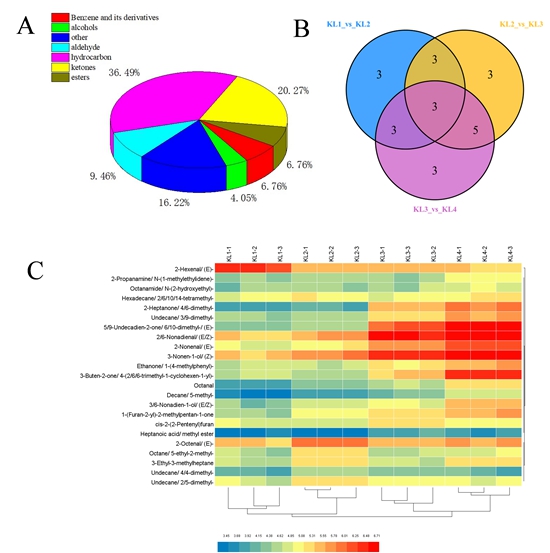Zhengzhou Fruit Research Institute Makes New Progress in the Study of Watermelon Fruit Flavor Formation
Watermelon is rich in water and nutrition, and it is one of the most popular fruits worldwide. With the increasing demand for watermelon to be more "nutritious, healthy and delicious", improving watermelon flavor has received wide attention from breeders. But what exactly is watermelon flavor? How is the watermelon flavor formed during the fruit's development?
Recently, Watermelon and Melon Cultivation and Physiological Innovation Team had made new progress in the study of watermelon fruit flavor formation, the accumulation and regulation mechanism of flavor-related metabolites in watermelon fruitwere analyzed by integrating transcriptome and metabolome data. The relevant research results were published in international academic journals Frontiers in Plant Science and Planta. Doctoral student Gong Chengsheng was the first author, and professor Liu Wenge was the corresponding author.
The flavor is typically described as a sum of the interactions between taste and aroma. Specifically, the taste is activated mainly through taste receptors in the mouth, mainly including sweet, sour, and bitter, and is mainly regulated by metabolites such as sugars, organic acids, and cucurbitacins. In addition, the aroma is the sense of smell through the nose to perceive volatile organic compounds (VOCs). Combined with UPLC-ESI-MS/MS and SPME-GC-MS detection technology platform, more than 500 kinds of annotated metabolites were obtained, and the accumulation pattern of metabolites related to watermelon flavor was identified. For instance, more than ten sugars were considered to be closely associated with the accumulation of sweet taste, and volatile organic compounds, such as 5,9-Undecadien-2-one, 6,10-dimethyl- and 2,6-Nonadienal,(E, Z)- were related to the formation of watermelon aroma.
Furthermore, through the co-expression pattern analysis of differential metabolites and differential genes, the key genes regulating flavor metabolites were screened. Five alcohol dehydrogenase genes were strongly correlated with volatile organic compounds, and seven UDP glycosyltransferase genes were correlated with the glycosylation of calabash. These results are of great significance for the molecular physiological basis of watermelon quality and flavor and the selection and development of new varieties.
Manuscript link:https://www.frontiersin.org/articles/10.3389/fpls.2021.629361/full
https://link.springer.com/article/10.1007/s00425-021-03680-7

Classification and differential metabolite analysis of volatile organic compounds in watermelon fruits
By Gong Chengsheng (15738391652@163.com)
-
 Apr 18, 2024Opening Ceremony of the Training Workshop on Wheat Head Scab Resistance Breeding and Pest Control in Africa Held in CAAS
Apr 18, 2024Opening Ceremony of the Training Workshop on Wheat Head Scab Resistance Breeding and Pest Control in Africa Held in CAAS -
 Apr 03, 2024IPPCAAS Co-organized the Training Workshop on Management and Application of Biopesticides in Nepal
Apr 03, 2024IPPCAAS Co-organized the Training Workshop on Management and Application of Biopesticides in Nepal -
 Mar 28, 2024Delegation from the School of Agriculture and Food Science of University College Dublin, Ireland Visit to IAS, CAAS
Mar 28, 2024Delegation from the School of Agriculture and Food Science of University College Dublin, Ireland Visit to IAS, CAAS -
 Mar 25, 2024Director of World Food Prize Foundation visited GSCAAS
Mar 25, 2024Director of World Food Prize Foundation visited GSCAAS -
 Mar 20, 2024Institute of Crop Sciences (ICS) and Syngenta Group Global Seeds Advance Collaborative Research in the Seed Industry
Mar 20, 2024Institute of Crop Sciences (ICS) and Syngenta Group Global Seeds Advance Collaborative Research in the Seed Industry
